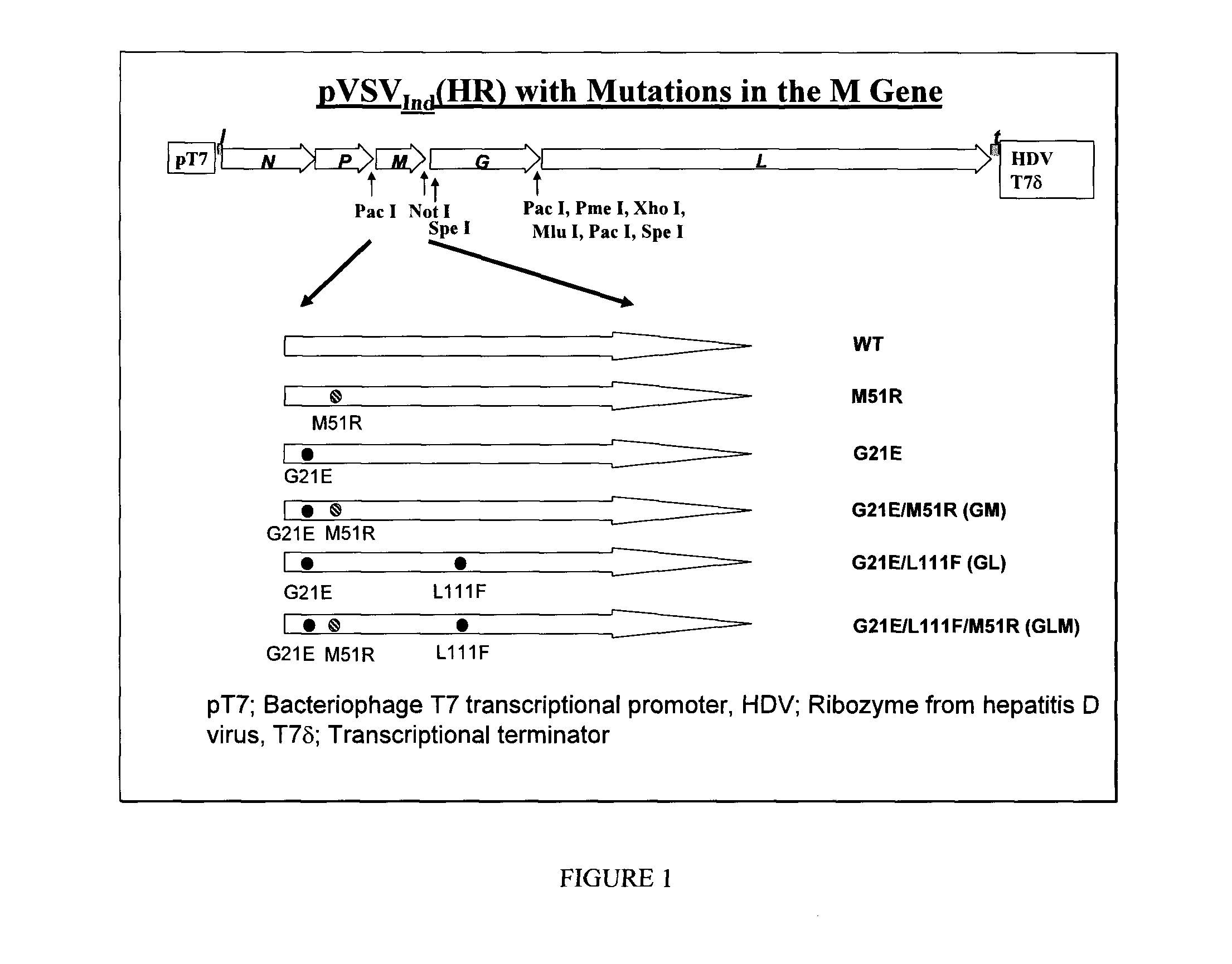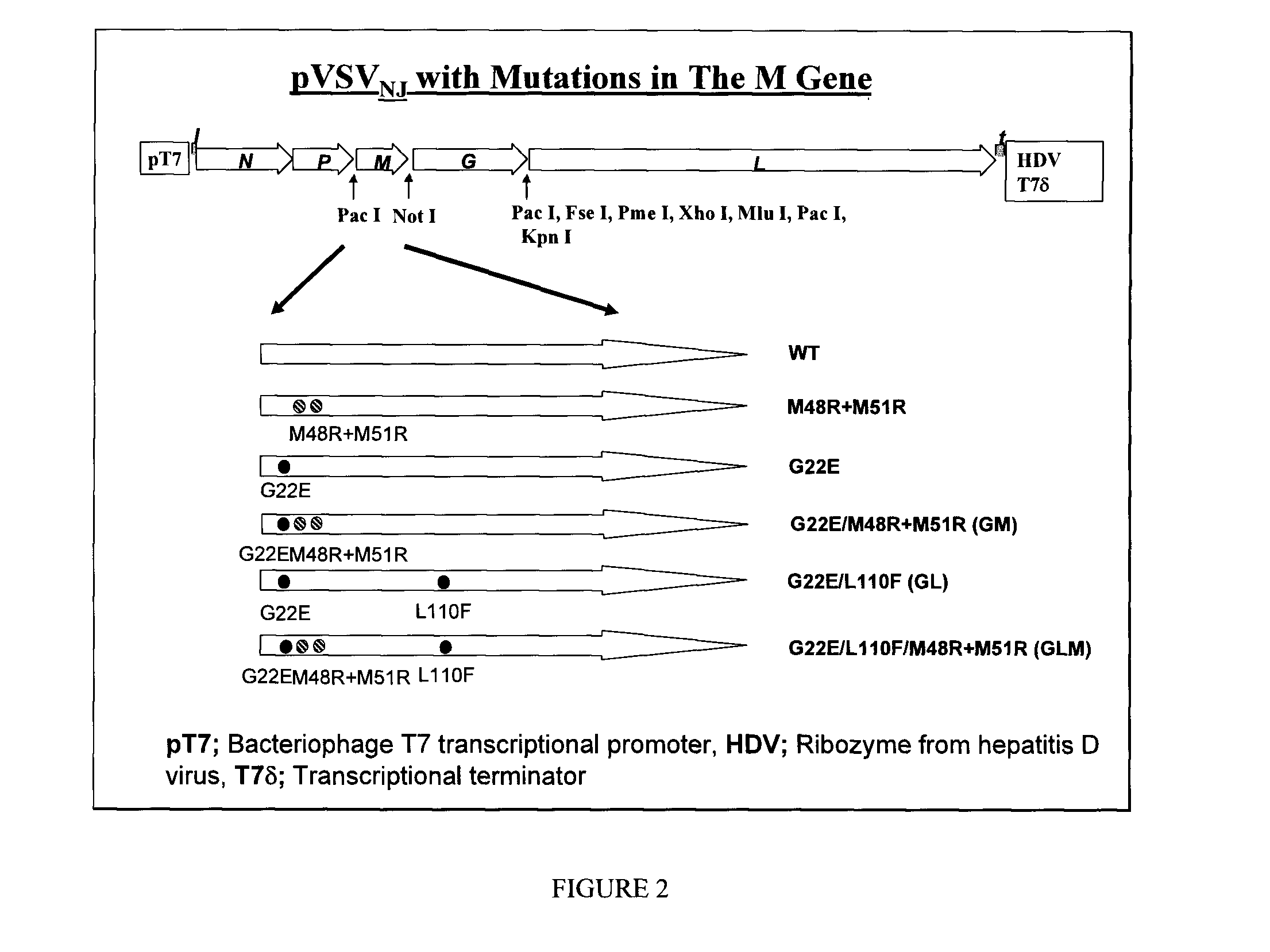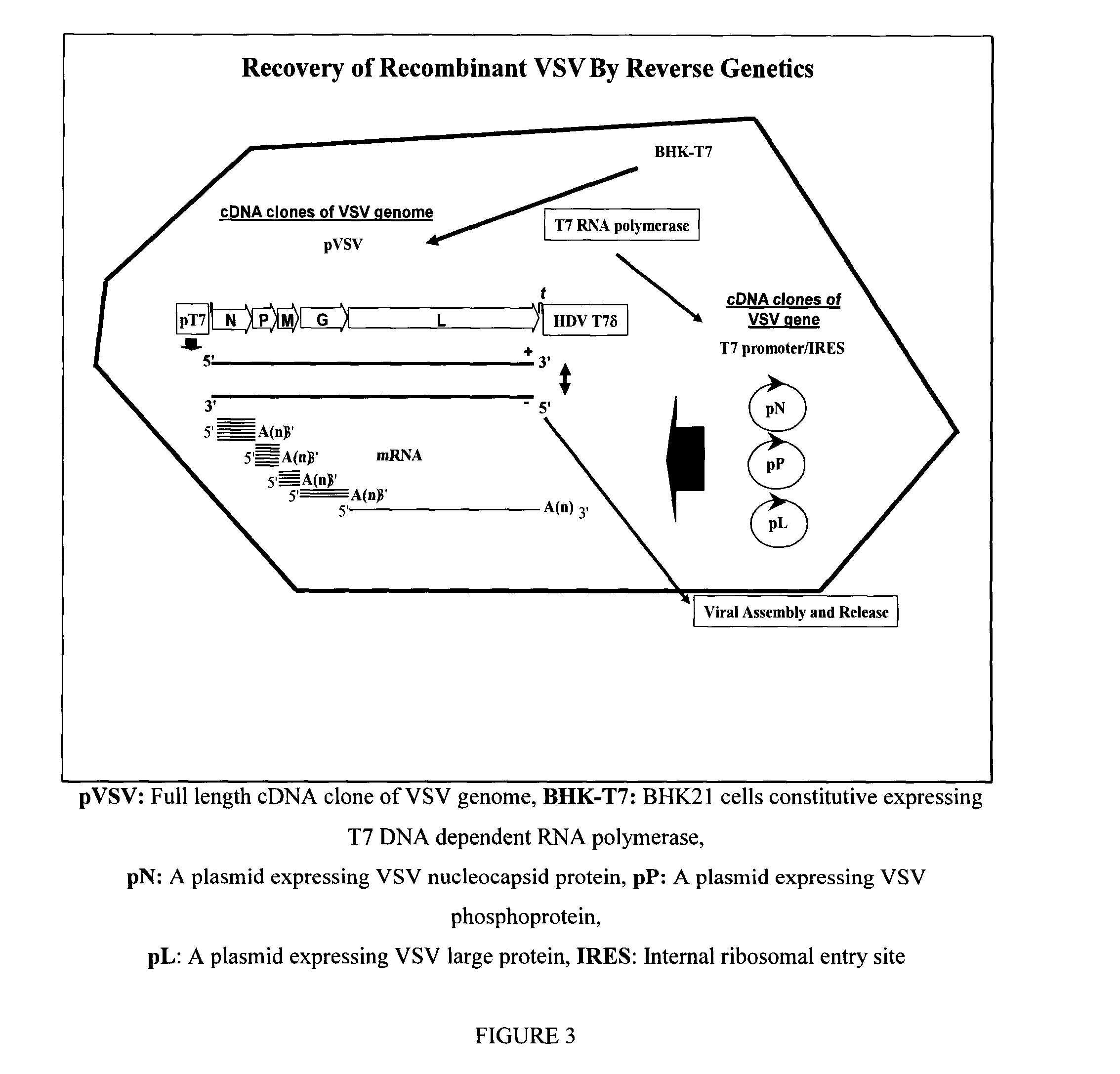Vesicular stomatitis virus for prime boost vaccine
a technology of vesicular stomatitis virus and vaccine, which is applied in the field of biotechnology and immunology, to achieve the effect of reducing the release of viruses from infected cells, attenuating and avirulen
- Summary
- Abstract
- Description
- Claims
- Application Information
AI Technical Summary
Benefits of technology
Problems solved by technology
Method used
Image
Examples
example 1
Introduction of Mutations into the M Genes of rVSVInd and rVSVNJ and Recovery of Recombinant VSV by Reverse Genetics
[0178]Mutations were introduced into the M gene of VSVInd (FIG. 1) and VSVNJ (FIG. 2). Nucleotide sequences encoding the amino acids at each position were mutated by the mega-primer PCR method. Each mutation is expressed as a substitution of an amino acid at a specific position (e.g., M51 in M51R) with another amino acid (e.g., R in M51R). In order to attenuate further the virulence of VSV, the inventors combined mutations (G21E and L11F) in the tsO23 with methionine to arginine mutations (M51R) in the M gene, which reduced inhibitory activity of M protein on the cellular protein synthesis, in addition, reduced the assembly of the VSV particles at nonpermissive (39° C.) and semi-permissive (37° C.) temperatures. The nucleotide sequences and amino acid changes from wild type to mutants in the M genes of rVSVInd and rVSVNJ are shown in Tables 2, 3, 4 and 5. The changed n...
example 2
The Mutation, L111F in the M Gene Significantly Reduces the Burst Sizes of rVSVInd at Semi-Permissive Temperature, 37° C.
[0180]The recovered viruses were purified 3 times by plaque picking and were amplified for a larger volume of stock viruses by infecting BHK21 cells with an MOI of 0.1 at 31° C. The inventors infected BHK21 cells and human neuroblastoma cells, SH-SY5Y with an MOI of 3 of rVSVs. The infected cells were incubated at permissive temperature (31° C.) and semi-permissive temperature (37° C., body temperature) to determine the temperature sensitivity of the new M mutants in the assembly of virus particles. Culture media from the infected cells were collected every 2 hours until 10 hours after the infection, and the number of infectious viral particles in the culture media was determined by plaque assay with Vero E6 cells. The cells infected with the mutant viruses for the plaque assay were incubated at 31° C. Wild type and all mutants replicated equally well and produced...
example 3
Mutations in the M Gene of rVSVNJ, G22E and L110F do not Reduce the Burst Size of the rVSVNJ at 37° C.
[0181]BHK21 cells were infected with an MOI of 3 of rVSVNJ, wild type and M gene mutants, incubated at both 37° C. (semi-permissive temperature) and 31° C. (permissive temperature) and the culture media was harvested at 10 hrs post infection. The viral titer of each virus in the culture media was determined by plaque assay using Vero E6 cells. The average viral titre from the duplicate samples is shown in the table. Wild type and all M mutants of rVSVNJ replicated equally well at both temperatures 31° C. and 37° C. (FIG. 5), indicating the introduction of G22E and L110F mutations into the M gene of rVSVNJ did not affect the assembly and release of the virus at 37° C. The error bars in FIG. 5 represent standard error of the mean.
PUM
| Property | Measurement | Unit |
|---|---|---|
| Temperature | aaaaa | aaaaa |
| Temperature | aaaaa | aaaaa |
| Temperature | aaaaa | aaaaa |
Abstract
Description
Claims
Application Information
 Login to View More
Login to View More - R&D
- Intellectual Property
- Life Sciences
- Materials
- Tech Scout
- Unparalleled Data Quality
- Higher Quality Content
- 60% Fewer Hallucinations
Browse by: Latest US Patents, China's latest patents, Technical Efficacy Thesaurus, Application Domain, Technology Topic, Popular Technical Reports.
© 2025 PatSnap. All rights reserved.Legal|Privacy policy|Modern Slavery Act Transparency Statement|Sitemap|About US| Contact US: help@patsnap.com



